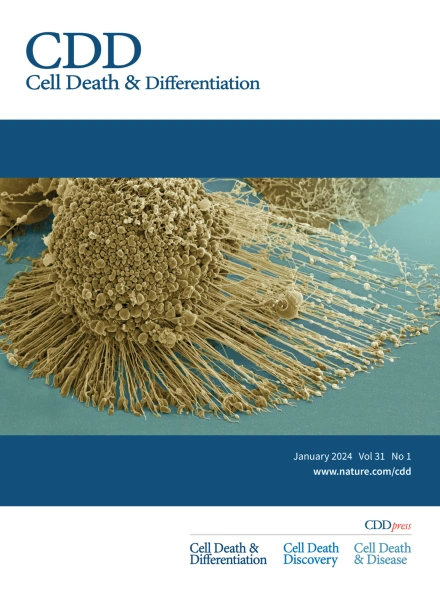ZNF593 regulates the cGAS-mediated innate immune response by attenuating cGAS-DNA binding
IF 15.4
1区 生物学
Q1 BIOCHEMISTRY & MOLECULAR BIOLOGY
引用次数: 0
Abstract
The enzyme cyclic GMP-AMP synthase (cGAS) is essential for detecting aberrantly located double-stranded DNA (dsDNA) from genomic, mitochondrial, and microbial origins. Through the synthesis of 2′3′-cGAMP, cGAS triggers the activation of the stimulator of interferon genes pathway, which initiates in vivo innate immune responses. Here, we identify zinc finger proteins ZNF593, which translocate from the nucleus to the cytoplasm after viral infection, as a negative regulator of antiviral type I IFN (IFN-I) production. ZNF593 directly binds to cGAS and suppresses its activation by inhibiting the cGAS-dsDNA interaction. ZNF593 deficiency increases IRF3 nuclear translocation and promotes DNA virus-triggered IFN production. Furthermore, ZNF593 deficiency promotes antiviral innate responses in vivo, improving survival rates in mice against HSV-1 infection. We further find that ZNF593 plays a protective role in systemic lupus erythematosus (SLE) pathology. Notably, replenishing ZNF593 effectively reduced IFN production in peripheral blood mononuclear cells (PBMCs) of SLE patients or in the TMPD-induced murine SLE model. Our findings suggest that ZNF593 negatively regulates IFN-β signaling by targeting cGAS activation, providing new insights into the regulatory mechanisms for antiviral defenses and autoimmune diseases.


ZNF593 通过减弱 cGAS 与 DNA 的结合来调节 cGAS 介导的先天性免疫反应
环GMP-AMP合成酶(cGAS)对于检测来自基因组、线粒体和微生物起源的异常位置的双链DNA (dsDNA)至关重要。cGAS通过合成2’3’-cGAMP,触发干扰素基因通路刺激因子的激活,引发体内先天免疫应答。在这里,我们发现锌指蛋白ZNF593在病毒感染后从细胞核转移到细胞质中,作为抗病毒I型IFN (IFN-I)产生的负调节因子。ZNF593直接结合cGAS,通过抑制cGAS- dsdna相互作用抑制其活化。ZNF593缺陷增加IRF3核易位,促进DNA病毒引发的IFN产生。此外,ZNF593缺陷促进体内抗病毒先天反应,提高小鼠抗HSV-1感染的存活率。我们进一步发现ZNF593在系统性红斑狼疮(SLE)病理中具有保护作用。值得注意的是,补充ZNF593可有效降低SLE患者外周血单个核细胞(PBMCs)或tmpd诱导的小鼠SLE模型中IFN的产生。我们的研究结果表明,ZNF593通过靶向cGAS激活负调控IFN-β信号,为抗病毒防御和自身免疫性疾病的调控机制提供了新的见解。
本文章由计算机程序翻译,如有差异,请以英文原文为准。
求助全文
约1分钟内获得全文
求助全文
来源期刊

Cell Death and Differentiation
生物-生化与分子生物学
CiteScore
24.70
自引率
1.60%
发文量
181
审稿时长
3 months
期刊介绍:
Mission, vision and values of Cell Death & Differentiation:
To devote itself to scientific excellence in the field of cell biology, molecular biology, and biochemistry of cell death and disease.
To provide a unified forum for scientists and clinical researchers
It is committed to the rapid publication of high quality original papers relating to these subjects, together with topical, usually solicited, reviews, meeting reports, editorial correspondence and occasional commentaries on controversial and scientifically informative issues.
 求助内容:
求助内容: 应助结果提醒方式:
应助结果提醒方式:


